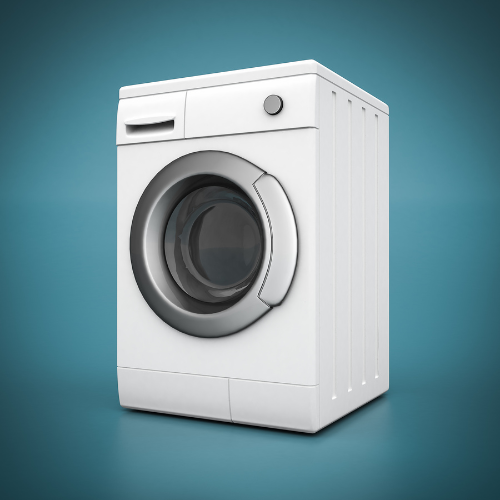Washing Machine Maintenance Tips: Extend Lifespan & Save Money
A washing machine is an essential appliance in any household, helping us keep our clothes clean and fresh. However, like any other machine, it requires regular maintenance to ensure its longevity and optimal performance. By following a few simple tips, you can not only extend the lifespan of your washing machine but also save money on repairs and replacements. In this blog post, we will explore the top tips for maintaining your washing machine, helping you avoid common problems and ensure its smooth operation for years to come.

Level and Placement
To start, it's crucial to ensure that your washing machine is properly leveled and placed on a sturdy surface. Uneven placement can lead to excessive vibrations during the spin cycle, causing damage to the machine and nearby objects. Use a bubble level to check the machine's balance and adjust the leveling feet accordingly. Additionally, make sure the machine is not placed too close to the wall, as it needs space for proper ventilation.
Follow Manufacturer's Instructions
Always refer to the manufacturer's instructions for operating and maintaining your washing machine. The manual provides valuable information specific to your model, including recommended cleaning procedures and maintenance schedules. Pay attention to load capacity guidelines, detergent recommendations, and any special care instructions for delicate fabrics. Following these guidelines will prevent overloading, detergent buildup, and unnecessary strain on the machine.
Clean the Drum and Dispenser
Regular cleaning of the drum and detergent dispenser is crucial to avoid unpleasant odors and maintain the machine's performance. After every wash cycle, wipe the drum and rubber gasket with a damp cloth to remove any residue or lint. Periodically, remove and clean the detergent dispenser to prevent clogs and buildup. Use a mild detergent and warm water for cleaning, and ensure that all parts are thoroughly dry before reassembling.
Use the Right Detergent and Avoid Overloading
Using the appropriate detergent is essential for both your clothes and the washing machine. Avoid using excessive amounts of detergent, as it can leave residues that may clog the machine or cause unpleasant odors. Follow the manufacturer's recommendations for the type and quantity of detergent to use. Additionally, avoid overloading the machine with clothes, as it can strain the motor and other components, leading to premature wear and tear.
Regularly Check Hoses and Filters
Inspect the hoses connected to your washing machine for signs of wear, cracks, or leaks. Replace any damaged hoses immediately to prevent water damage or flooding. It is also important to clean or replace the inlet filters regularly. Clogged filters can restrict water flow and affect the machine's performance. Refer to the manual for instructions on locating and cleaning these filters.
Balance the Load
Unevenly distributed loads can cause the washing machine to vibrate excessively and potentially move during operation. To avoid this, distribute the clothes evenly in the drum, placing heavier items opposite each other. Balancing the load will reduce strain on the motor and suspension system, promoting smoother and quieter operation.
Perform Regular Maintenance
Schedule routine maintenance tasks to keep your washing machine in top shape. This includes inspecting and cleaning the drain pump filter, checking the door seal for leaks or mold growth, and cleaning the exterior of the machine. Additionally, consider using a washing machine cleaner periodically to remove any buildup and maintain optimal performance.
Conclusion
By following these top tips for maintaining and extending the lifespan of your washing machine, you can save money, avoid breakdowns, and ensure efficient laundry cycles for years to come. Regular cleaning, proper usage, and preventive maintenance will not only keep your clothes fresh and clean but also increase the longevity of your washing machine. Remember to level and place the machine properly, follow the manufacturer's instructions, clean the drum and dispenser regularly, use the right detergent and avoid overloading, check hoses and filters, balance the load, and perform routine maintenance. These simple practices will help you avoid common problems, such as leaks, clogs, and excessive vibrations. By taking care of your washing machine, you'll enjoy hassle-free laundry days and get the most out of your appliance investment. Keep these tips in mind and enjoy a well-functioning washing machine that serves you well for years to come.


